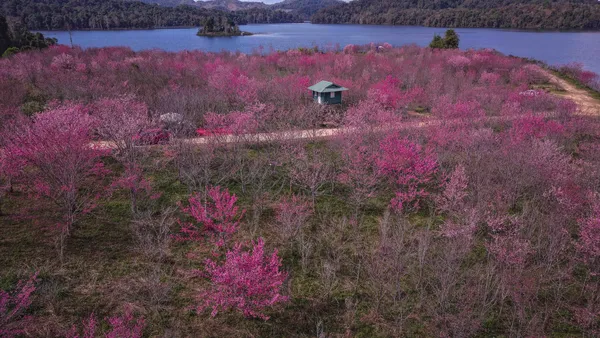 Life & Style
Life & Style

Authorities in central Quảng Bình Province has given their nod to the proposal to install a ladder system inside the world’s largest cave – Sơn Đoòng Cave.
 |
| A site in Sơn Đoòng Cave that needs ladders to protect stalactites. Photo: Howard Limbert |
QUẢNG BÌNH — Authorities in central Quảng Bình Province has given their nod to the proposal to install a ladder system inside the world’s largest cave – Sơn Đoòng Cave.
Oxalis, the sole tour provider for expedition programmes in the cave, and Howard Limbert, a cave expert in the team of the British Cave Research Association that discovered the cave, have proposed installing ladders inside the cave to protect the stalactites from visitors.
According to the proposal, the ladders will help visitors overcome a high stalactite wall, called “Việt Nam’s Great Wall.” The wall is vulnerable to pressure and the ladders will help visitors climb it without touching the stalactites.
The ladders are also expected to help speed up emergency medical aid for visitors who accidentally get injured inside the cave.
In addition, the ladders will reduce the duration of time visitors spend inside the cave, which means less impact on the entire cave.
The two ladders will be 65m and 25m in length. The 65m ladder will be installed permanently with nails hammed to the karst surface. Notably, this ladder requires 23 nails, of which, eight will be installed while 15 others were hammered by the British association’s explorers in 2010 during their exploration trip.
The 25m ladder is a single ladder that does not require nails and is removable.
Authorities of the Phong Nha-Kẻ Bàng National Park, the technical manager overseeing Sơn Đoòng as part of the world heritage group, passed the proposal as they determined it would cause no harm to the stalactites but could reduce impact on the grotto in general.
The province People’s Committee did the same, giving the green light for the installation.
However, this sparked a fresh controversy as netizens worried about the impact from the nails. Subsequently, the Department of Cultural Heritage has requested a detailed report on the installation.
Trần Tiến Dũng, the committee’s deputy chairman, told local newspapers that environmental impact assessment is not necessary in this case as no construction would be done at the site, and the national park, the direct manager of the cave, has given its approval.
Howard Limbert, an expert with 25 years’ experience in exploring Quảng Bình’s caves, including Sơn Đoòng, affirmed to local authorities and the media that the installation would not harm the grotto and would provide “a definite path” for visitors to follow, avoiding stepping on newly-formed stalactites.
A maximum of 270 visitors are allowed in the cave in one year and Oxalis has also made strict rules ensuring visitors who get the opportunity to go inside the cave respect nature. — VNS




